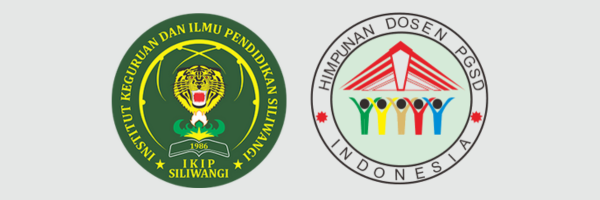CRITICAL PEDAGOGY: THE ROLE OF STUDENT DIGITAL LITERACY IN UNDERSTANDING CRITICAL PEDAGOGY
DOI:
https://doi.org/10.22460/pej.v5i2.2752Abstrak
Technological developments encourage students to adapt and must be able to control technology with digital literacy. Critical pedagogy understanding can be the basis for students in developing pedagogy mindsets and skills. The purpose of this study is to explore how digital literacy influences students' critical pedagogy understanding. The method in this research uses an exploration method with a quantitative approach. The sample in this study is a student at one of the universities in West Java. The instrument used is a questionnaire instrument containing students' digital literacy and a test instrument containing students' critical pedagogical abilities. The instruments used have gone through expert validation. The analysis in this study uses SEM (Structural Equation Modeling) which can provide information about the effect of a variable with a complex model. The results of the analysis show that digital literacy has a significant influence on students' critical pedagogical understanding abilities. The influence is represented by the dimensions of access, evaluate and share. Although the results of the study show a positive value, there needs to be an in-depth study of how these dimensions can have an effect.
Referensi
APJII. (2020). Laporan Survei Internet APJII 2019 – 2020. Asosiasi Penyelenggara Jasa Internet Indonesia, 2020, 1–146.
Astini, N. K. S. (2019). Pentingnya Literasi Teknologi Informasi Dan Komunikasi Bagi Guru Sekolah Dasar Untuk Menyiapkan Generasi Milenial. Prosiding Seminar Nasional Dharma Acarya, 1(2018), 113–120.
Bai, J., & Ng, S. (2005). Tests for skewness, kurtosis, and normality for time series data. Journal of Business & Economic Statistics, 23(1), 49–60.
Calvani, A., Cartelli, A., Fini, A., & Ranieri, M. (2008). Models and instruments for assessing digital competence at school. Journal of E-Learning and Knowledge Society, 4(3), 183–193.
Dehler, G. E., Welsh, M. A., & Lewis, M. W. (2001). Critical pedagogy in thenew paradigm’. Management Learning, 32(4), 493–511.
Durst, R. K. (2006). Can We Be Critical of Critical Pedagogy? College Composition and Communication, 58(1), 110–114.
Eshet, Y. (2004). Digital literacy: A conceptual framework for survival skills in the digital era. Journal of Educational Multimedia and Hypermedia, 13(1), 93–106.
Fox, S. (2016). An Equitable Education in the Digital Age: Providing Internet Access to Students of Poverty. Journal of Education & Social Policy, 3(3), 12–20.
Frechette, J. (2014). Top Ten Guiding Questions for Critical Digital Literacy. The Journal of Media Literacy, 61(1–2), 14–21.
Funk, S., Kellner, D., & Share, J. (2015). Critical Media Literacy as Transformative Pedagogy. In: Handbook of Research on Media Literacy in The Digital Age. IGI Global.
Gilster, P. (1997). Digital literacy. John Wiley & Sons, Inc.
Hague, C., & Payton, S. (2010). Digital literacy across the curriculum Key to themes: A Futurelab handbook.
Hobbs, R. (2010). Digital and Media Literacy: A Plan of Action. A White Paper on the Digital and Media Literacy Recommendations of the Knight Commission on the Information Needs of Communities in a Democracy. ERIC.
Imron, A. (2020). Mengkonstruksi Kesadaran Kritis dalam Pendidikan di Era New Normal: Telaah Perspektif Pedagogi Kritis.
Iordache, C., Mariën, I., & Baelden, D. (2017). Developing Digital Skills and Competences: A Quick-Scan Analysis of 13 Digital Literacy Models. Italian Journal of Sociology of Education, 9(1), 6–30. https://doi.org/10.14658/pupj-ijse-2017-1-2
Kim, E. mee, & Yang, S. (2016). Internet Literacy and Digital Natives’ Civic Engagement: Internet Skill Literacy or Internet Information Literacy? Journal of Youth Studies, 19(4), 438–456. https://doi.org/10.1080/13676261.2015.1083961
Kominfo. (2020). Temuan Isu Hoaks.
Leonard, P., & McLaren, P. (2002). Critical pedagogy and state welfare: Intellectual encounters with Freire and Gramsci, 1974-86. In Paulo Freire (pp. 167–180). Routledge.
Marsh, H. W., Hau, K.-T., & Grayson, D. (2005). Goodness of fit in structural equation models.
Martin, A. (2008). Digital literacy and the “digital society.†Digital Literacies: Concepts, Policies and Practices, 30(2008), 151–176.
Murray, M. C., & Pérez, J. (2014). Unraveling the Digital Literacy Paradox: How Higher Education Fails at the Fourth Literacy. Issues in Informing Science and Information Technology, 11, 085–100. https://doi.org/10.28945/1982
Murtadho, A. (2020). Mengembangkan Kompetensi Guru dalam Perspektif Pedagogi Kritis (Telaah atas UU RI No. 14 tahun 2005 Tentang Guru dan Dosen serta PP RI No. 74 tentang Guru). Al-Idarah: Jurnal Kependidikan Islam, 10(2), 135–156.
Nasionalita, K., & Nugroho, C. (2020). Indeks Literasi Digital Generasi Milenial di Kabupaten Bandung. Jurnal Ilmu Komunikasi, 18(1), 32–47. https://doi.org/10.31315/jik.v18i1.3075
Nevin, A., Smith, R. M., & McNeil, M. (2008). Shifting Attitudes of Related Service Providers: A Disability Studies & Critical Pedagogy Approach. International Journal of Whole Schooling, 4(1), 1–12.
Nugroho, C., & Nasionalita, K. (2020). Indeks Literasi Digital Remaja di Indonesia. Journal Pekommas, 5(2), 215–223. https://doi.org/10.30818/jpkm.2020.2050210
Nurjanah, E., Rusmana, A., & Yanto, A. (2017). Hubungan Literasi Digital dengan Kualitas Penggunaan E-Resources. Lentera Pustaka: Jurnal Kajian Ilmu Perpustakaan, Informasi Dan Kearsipan, 3(2), 117. https://doi.org/10.14710/lenpust.v3i2.16737
Pangrazio, L., Godhe, A. L., & Ledesma, A. G. L. (2020). What is Digital Literacy? A Comparative Review of Publications Across Three Language Contexts. E-Learning and Digital Media, 17(6), 442–459. https://doi.org/10.1177/2042753020946291
Setiawardani, W., Robandi, B., & Djohar, A. (2021). Critical Pedagogy in the Era of the Industrial Revolution 4.0 To Improve Digital Literacy Students Welcoming Society 5.0 in Indonesia. PrimaryEdu - Journal of Primary Education, 5(1), 107–118. https://doi.org/10.22460/pej.v5i1.2073
Setyaningsih, R., Abdullah, A., Prihantoro, E., & Hustinawaty, H. (2019). MODEL PENGUATAN LITERASI DIGITAL MELALUI PEMANFAATAN E-LEARNING. Jurnal ASPIKOM, 3(6), 1200. https://doi.org/10.24329/aspikom.v3i6.333
Talib, S. (2018). Social Media Pedagogy: Applying an Interdisciplinary Approach to Teach Multimodal Critical Digital Literacy. E-Learning and Digital Media, 15(2), 55–66. https://doi.org/10.1177/2042753018756904
Tobing, V. (2020). Insiden web defacement: Vol. Juni 2020 (Issue Maret).
UrbanÄÃková, N., Manakova, N., & Bielcheva, G. (2017). Socio-economic and regional factors of digital literacy related to prosperity. Quality Innovation Prosperity, 21(2), 124–141. https://doi.org/10.12776/qip.v21i2.942
Widhiarso, W. (2012). Pemodelan Persamaan Struktural ( SEM ) pada Data yang Tidak Normal. Yogyakarta: Universitas Gajah Mada., 1–12.
Yuniarti, Y., Mulyati, T., Abidin, Y., Herlambang, Y. T., & Yusron, E. (2021). Eksplorasi pembelajaran matematika secara daring dalam dimensi pedagogik. NATURALISTIC : Jurnal Kajian Penelitian Pendidikan Dan Pembelajaran, 5(2), 856–871. https://doi.org/10.35568/naturalistic.v5i2.1208












